Skill Progression
Before we even dive into the Meat and Potatoes of the build, I'm sure the vast majority of you are already taking issue with the Skill Progression posted above.
"That's right Mr. Praetorian! I always thought the Stats was something I should only get after the rest of my spells had been maxed out!"
Well ordinarily yes, you are right John Q. Public. However, let's take a closer look at the progression of the spells individually. It is there you will find my answer. Let's address the skills in order.
Gush
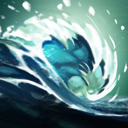
This is an all-around great skill, especially for a beastly Tank like
 Tidehunter
Tidehunter. First off, it has a range of 700, which is longer than the vast majority of ranged attacks in the game, with the one glaring exception, of course, being
 Sniper
Sniper. Secondly, it does just about everything a Tank wants in one spell:
- Does a moderate amount of damage
- Drops the target's armor
- Slows the target by 40%
Because of the armor drop, this is the skill you want to maximize first, because early on in the game the armor reducing effects of
 Gush
Gush are
devastating. You might think that 5 armor will not make much of a difference, but take it from me John Q. Public. When everyone in game is still in the general vicinity of Level 5, they will not have much armor to begin with, many characters' armor will drop to the point of
 Gush
Gush actually amplifying damage.
Kraken Shell
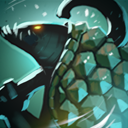
In my honest opinion, this is perhaps the greatest tanking passive that has ever existed. With
 Kraken Shell
Kraken Shell, you will be continually brushing off your enemies' debuffs once you take 600 damage total in one fight. With this skill you will become either a relentless assault unto your foes or a bulwark for your allies. This is the skill that should be favored second after
 Gush
Gush due to it's amazing ability to keep
 Tidehunter
Tidehunter in the fight rather than locked down by enemy spells.
CAUTION!
 Kraken Shell
Kraken Shell will only purge debuffs from you in one big chunk, it will not grant you immunity to debuffs. For instance, if you take 600 damage while inside a
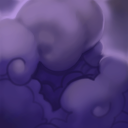 Smoke Screen
Smoke Screen cast by
 Riki
Riki, you will remain under the ill-effects of the
 Smoke Screen
Smoke Screen. However, if you are stunned while inside the
 Smoke Screen
Smoke Screen and take 600 damage, the stun will be purged. The effects of most ultimates, however, will stick to you.
Anchor Smash
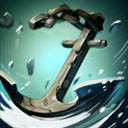
This is Tidehunters's third skill, and one that I only take one level in until the very end of the game, if it even gets that far. In my opinion, it does not merit having more than one point put into it until the very late game.
"But Mr. Praetorian, don't all other skills trump putting points into Stats?"
In most cases, John Q. Public, you would be right, but take a look at the actual stats that
 Anchor Smash
Anchor Smash has. What does the spell actually do and how does it differ between Level 1 and Level 4? The answer is simply more damage. As a tank, you don't want to be doing too much spell damage once the fight really begins in earnest, lest you steal kills from the carries. The real benefit of
 Anchor Smash
Anchor Smash is the reduction in damage it puts on enemies. This debuff does not progress with levels. It reduces enemy damage by 40% for 6 seconds in a 400 radius at every level.
"But Mr. Praetorian, at Level 4,  Anchor Smash's cooldown is shorter than the debuff duration!"
Anchor Smash's cooldown is shorter than the debuff duration!"
That's very true, John Q. Public, however that can only truly be taken advantage of if you are in position to maximize the
 Anchor Smash
Anchor Smash's damage reducing effects every 4 seconds of every teamfight. At Level 1, there is only a 1 second difference between the debuff duration and cooldown of
 Anchor Smash
Anchor Smash. The spell is best used with as many enemies in the 400 radius as possible, not cast every 4 seconds simply because the cooldown has been refreshed. Also, why spend more mana for the same debuff? The effects of
 Anchor Smash
Anchor Smash don't increase, only the damage does.
Ravage
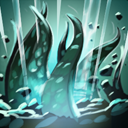
This is one of the best Tank abilities in the entire game, for just about every reason. However, just for you, John Q. Public, I'm going to enumerate them right here:
 Ravage stuns everything it touches, enemy heroes included, for 2.25 seconds.
Ravage stuns everything it touches, enemy heroes included, for 2.25 seconds.- Great damage for an initiating spell, capping at 450 for Level 3
- An enormous radius of effect, reaching 1025, forcing teams to either stay out of cohesion or risk being all hit simultaneously by you.
"But Mr. Praetorian, didn't you say before that I shouldn't be doing too much magic damage?
Very astute, John Q. Public, however, this spell is use in a much different fashion than
 Anchor Smash
Anchor Smash.
 Ravage
Ravage. in conjunction with
 Gush
Gush is and Initiating Spell, which is used right at the beginning of the teamfight, when all of your enemies are at full health and not in direct danger of being killed.
 Ravage
Ravage will only provide an initial advantage in the teamfight with its damage, earning you maximum assists with minimal kills.
"But Mr. Praetorian, shouldn't I want to get kills in DotA 2?"
Yes, you should, John Q. Public, however, you want to get your
team kills, though not necessarily yourself kills. As a tank, it is your job to try to focus as much attention on yourself as possible, disable as many enemies as possible, and make sure that the carries can escape the teamfight with their lives. Just remember your place in the team dynamic:
AS THE TANK, YOUR LIFE IS NOT AS IMPORTANT AS THOSE OF YOUR TEAMMATES!
Tanks are capable of taking enormous amounts of punishment and do not suffer the hindering effects of death as keenly as a carry will. Tanks are almost never carries as well. You will more gold from 5 assists and taking a tower rather than nicking one kill and letting your carry die because of it. This I guarantee. You will also benefit in the long run if you are willing to sacrifice your life so that others may live.
If you can prevent the deaths of 2 teammates by sacrificing yourself, it makes mathematical sens to do so. This comes in the gold loss from death. Everyone loses some gold when they die. If only you, as the tank, die and prevent the deaths of 4 teammates, your team will lose much less gold on the whole, though you personally will lose more. Tanks have an
obligation to lay down their own lives for the good of the team. This isn't League of Legends, where every character can potentially be a carry. All heroes have their classifications and should stick to them if they want the team to be successful.
Stats Upgrade
The reasoning behind this skill is more so explained by the reasoning to not take
 Anchor Smash
Anchor Smash as far as you can as soon as you can. However, I will further explain the merits of the Stats. Each level you gain, you can take an extra 2 in Strength, Agility, and Intelligence. Each of those make you more potent in combat. On the surface, and with each stat upgrade looked at individually, a bonus of 2 to each stat does not sound like much. This assumption is wrong.
Strength
This is a straightforward explanation for
 Tidehunter
Tidehunter's benefit from strength. It gets you more HP, more HP regeneration, and more damage. Very simple.
Agility
This is a bit harder to explain, but bear with me.
 Tidehunter
Tidehunter is not an agility-based hero, so why bother giving him agility? There are several reasons. Fist is Armor, 7 points of agility net you an additional point of armor. Armor means damage mitigation that stacks with
 Kraken Shell
Kraken Shell. Seconid is Attack Speed.
"But Mr. Praetorian, why would a tank need attack speed? You just explained that I shouldn't be getting kills."
Again, John Q. Public, you are quite correct. This advantage will be better explained in the Items Section of the guide when we talk about
 Sange and Yasha
Sange and Yasha.
Intelligence
This is even harder to explain than Agility. However, I will simply sight that Intelligence will give
 Tidehunter
Tidehunter much needed Mana and Mana regeneration.
Equipment by Game Phase
Now that we've gone over the reasoning behind the skill progression outlined previously in the guide, we can move on into reasoning for the item purchases. Again, I'm sure at least half of you have already voted the guide down and flamed it in the comments below for not following the standard  Tidehunter logic. However, for those of you still remaining faithful or simply reading on due to intrigue or morbid obsession with what you deem destined to fail, let's dive head first beginning with starting purchases.
Tidehunter logic. However, for those of you still remaining faithful or simply reading on due to intrigue or morbid obsession with what you deem destined to fail, let's dive head first beginning with starting purchases.
Starting Set





This is on place where the standard item build is something I agree with. The first stat upgrade you should take is some extra starting strength. Aside from these two
 Gauntlets of Strength
Gauntlets of Strength you should also pick up some consumables, your standard
 Tango
Tangos a
 Healing Salve
Healing Salve and a
 Clarity
Clarity.
Be sure to favor using the
 Tango
Tangos to heal yourself before using the
 Healing Salve
Healing Salve since the
 Tango
Tangos can be used mid combat. You will also wind up using a fair amount of Mana in the first few skirmishes you and you lane partner have with your opponents in-lane. Thus, the
 Clarity
Clarity comes in quite handy when you need to stay in-lane rather than hiking all the way back to base.
Early Game



Here is where we start building
 Tidehunter
Tidehunter into more of a fighter than simply making him into a one-trick pony. Or....fish...man....thing. Whatever, you get the idea of what I'm talking about. Anyway,
 Tidehunter
Tidehunter, just like any other hero, needs his
 Boots of Speed
Boots of Speed so he can catch and escape his enemies better. If you can, buy these first at your lane's Outpost and pick up your pair of
 Bracer
Bracers when you head back to town.
These
 Bracer
Bracers provide an excellent advantage early game in terms of Stats, which is crucial for those first few conflicts. With the bonuses they provide, a cool-headed
 Tidehunter
Tidehunter should be able to turn a bleak situation to their advantage, especially if your enemies are encroaching on your tower in their attempts to kill you. I would also recommend picking up a
 Ring of Protection
Ring of Protection in town when you can for later on.
Core Build




All right, John Q. Public, this is the section you've been waiting for. Here's where the guide gets radically different from most people's vision of how
 Tidehunter
Tidehunter is meant to be played. Most people build
 Tidehunter
Tidehunter regarding
 Ravage
Ravage and nothing else. However, this does not allow
 Tidehunter
Tidehunter make use of all the other advantages he possesses. Let's go through these items individually so that we might discover how they turn
 Tidehunter
Tidehunter from an all-around great hero into a
Juggernaut!
 Tranquil Boots
Tranquil Boots
This is an item that I have been using on more and more tanks lately, since it allows one to stay in their lane more during laning phase and helps usually slow tanks get to where combat is happening faster. This is also an excellent item for
 Tidehunter
Tidehunter specifically.
 Tidehunter
Tidehunter is in the upper echelon of starting move speed, at 310. Couple this with a bonus of 80, and you're up to a blistering 390 move speed, unbuffed, when out of combat.
"But Mr. Praetorian, doesn't the move speed of  Tranquil Boots drop down to 55 once you're in combat? Isn't that just like
Tranquil Boots drop down to 55 once you're in combat? Isn't that just like  Boots of Speed?
Boots of Speed?
Again, John Q. Public, you prove yourself to be quite the diligent and attentive student. This is a valid concern, but let me alleviate it thusly.
Once you are in combat, you no longer need to be fast. After you have engaged the enemy, all partied involved will be slowing and stunning one another like it's going out of style. At that point, we can rely on other items in the build and
 Tidehunter
Tidehunter's natural abilities to carry us to victory.
Something else to be considered is the ability of
 Tranquil Boots
Tranquil Boots to heal the user. They heal for 150 HP for a paltry 24 mana. This is more than a sip from a
 Bottle
Bottle and also provides extra armor and health regeneration that a
 Bottle
Bottle can't. When combined with the other move speed bonuses you will be getting from the rest of the build, you will begin to question the need for a
 Blink Dagger
Blink Dagger at all.
 Drum of Endurance
Drum of Endurance
 Drum of Endurance
Drum of Endurance is one of those items that is good for everyone, not simply yourself. Again, the bonuses provided by it seem minimal when taken at face value, but if one were to consider the actual numbers at stake, then the advantages become clear. First off, the development of
 Bracer
Bracer into a
 Drum of Endurance
Drum of Endurance fills in the shortcomings of a
 Bracer
Bracer. It provide an additional 6 Agility, Intelligence, and Damage. Moreover, it provides the all important Swiftness Aura.
Swiftness Aura is an amazing ability for relatively little cost in gold. The 5% bonus to speed is great when applied to naturally quick characters,
 Tidehunter
Tidehunter among them. With only this and
 Tranquil Boots
Tranquil Boots,
 Tidehunter
Tidehunter's speed climbs up to 410. Activate
 Drum of Endurance
Drum of Endurance with a quick keystroke, and your move speed climbs up to 429. Not to mention the boon it will provide the entire team within a 900 radius. This movement speed becomes invaluable, particularly in the late stages of the game, when your carries are trying to conserve gold for other items or, hopefully, have a full inventory already and need to make that last push.
 Bracer
Bracer
I'm not going to lie to you John Q. Public, this item is essentially just a remnant from the earlier phases of the game. Be that as it may,
 Bracer
Bracers are still good items for that extra stat boost to give you a competitive edge. This should only be replaced by one of the Situational Items after the enemy team has played their cards in terms of builds and you no longer have an open inventory slot. This is mostly so because the Tank needs to be adaptable, reacting to what the enemy team is bringing to the table and how he can best mitigate it.
 Sange And Yasha
Sange And Yasha
This is the big one, ladies and gents.
 Sange and Yasha
Sange and Yasha is the main event with this build and will probably be the biggest controversy. Yet again, I assure you John Q. Public, that this is a
fantastic item to build on
 Tidehunter
Tidehunter for many reasons:
- Move & Attack Speed
- Large Stat Bonuses and All that they Imply
- Greater Maim
- Scaling Effectiveness
Let's go through these one at a time, so we can properly appreciate all that
 Tidehunter
Tidehunter stands to gain from wielding
 Sange and Yasha
Sange and Yasha, starting with number one.
Move & Attack Speed
As previously pointed out,
 Tidehunter
Tidehunter is one of the faster heroes in DotA 2. As such, we should take advantage of this...um...advantage. We already have a move speed of 429 when out of combat, thanks to
 Drum of Endurance
Drum of Endurance. However, now we can couple that with a hefty 12% move speed bonus from
 Sange and Yasha
Sange and Yasha.
Without activating
 Drum of Endurance
Drum of Endurance,
 Tidehunter
Tidehunter will be moving at an impressive 456. When activated, this move speed jumps up even further 476. When you come rushing from out of the fog of war like the
Tidal Wave that you are, your enemies will scramble. This winds up being more effective than simply blinking in. Your enemies are not Bots, this means that they are susceptible to the most powerful weapon in DotA 2:
FEAR
When rush out from the woods, moving at such a blistering pace, it will cause much more chaos than blinking in.
Think about it for a moment, if you will. When the average
 Tidehunter
Tidehunter is in the game, they will initiate by blinking in, using
 Ravage
Ravage, then becoming a minor player in the ensuing ****shoot. This player has spent 2150 gold on their
 Blink Dagger
Blink Dagger and maximized their spells first, rather than beefing up with stats.
After this player casts
 Ravage
Ravage, they are largely ignored by the enemy team since they have had ample time to come to terms with his presence in combat with their 2.25 seconds spent stunned. By now, this
 Tidehunter
Tidehunter's team has already moved in and begun to attack the enemy team. They have also put themselves in prime position to be counterattacked by 4-5 enemies with full mana since they did not have time to react. As
 Tidehunter
Tidehunter and the Tank, you want to give the enemy team time to react.
"Wait Mr. Praetorian, that makes no sense at all. Shouldn't I want to minimize the damage done by the enemy team?"
Well yes, John Q. Public, but you are only partly correct. As the tank, you want to minimize the damage done to the
TEAM. This is better achieved by focusing the enemy team's attention on you, rather than your teammates, specifically your carries who might be much more vulnerable to damage and spells than you are. Now, instead of the situation we described above, picture how the team fight would play out if you used this build.
When you, playing as
 Tidehunter
Tidehunter come sprinting out of the woods in front of your team, the enemy team's formation will break in order to avoid
 Ravage
Ravage. The first to fall back are the carries. They are the ones whose lives are the most valuable. The next to break rank is the enemy tank, rushing in to negotiate the threat that has so readily presented itself. Who is left? You, the enemy tank, and the enemies most valuable players,
their support.
These are the heroes who have spent time, and gold building items to benefit the team and have not become dedicated killing machines. Either they break rank to flee from you, or they move in wit the tank to lock you down. Either way, you are now going to be taking the damage from up to 3 different enemies or, from 1 at the least with two slower support character trying in vain to escape.
Regardless, these 3 will all most likely then get caught by your
 Ravage
Ravage. Now, instead of forcing the enemy team to hold their spells for the more valuable targets, you have drawn their fire. This is a good thing. Now, you have the stats to back up the damage you will be taking in this team fight. More importantly, your team is not taking said damage. This is the key idea that I simply cannot stress enough. You, as the Tank, should be your team's sponge. You are already capable of absorbing the damage, now you must be willing to soak it up.
"Mr. Praetorian, I think that's enough sponge puns, don't you?"
Yes, you're right John Q. Public, and I have no snappy comeback nor logical reason to disagree with you this time. However, we must move on.
Large Stat Bonuses and All that they Imply
The raw stats the
 Sange and Yasha
Sange and Yasha provides is another core reason to use it on
 Tidehunter
Tidehunter. However, these provide more bonuses than most players remember.
Strength is obvious now as it was earlier.
 Tidehunter
Tidehunter is a Tank, and as such loves HP and HP regeneration. This also gives damage to your attacks, which you want as well.
"Wait Mr. Praetorian, you're contradicting yourself again. Why should I want damage on my attacks, but limit my spell damage?
Yet another keen observation John Q. Public. The reason you want to have attack damage as
 Tidehunter
Tidehunter is so that you remain a viable threat to the enemy team. If you are threatening, then you warrant attention. If you warrant attention, you warrant damage. And what did we say about taking damage while playing as
 Tidehunter
Tidehunter?
The other attribute that sange and yahsa will provide is
Agility. Why is this a good stat for a Tank, becuase Agility gives you
Armor 16 Agility will net you an additional 2 Armor, which means damage mitigation. Mitigation is always good for a Tank. Agility also provides attack speed on top of the straight bonus provided. When most players are accustomed to the standard
 Blink Dagger
Blink Dagger build for
 Tidehunter
Tidehunter, his increased attack speed will seem utterly terrifying as you team dispatches the enemy team with deadly efficiency.
Greater Maim
This is a great effect levied onto opponents by
 Sange and Yasha
Sange and Yasha. Its main reason for being an advantage with
 Tidehunter
Tidehunter, however, is that is slows enemies who are fortunate enough to not be already dead by your team's hand and smart enough to try to escape that fate. A slow that does not need to be cast and can be largely ignored by its wielder is seldom ever taken into account by their enemies.
Scaling Effectiveness
The term I am using here refers to
 Sange and Yasha
Sange and Yasha being an effective item while still in pieces. No, I don't simply mean having either
 Sange
Sange or
 Yasha
Yasha. I am referring to every step along the way. Each item in its construction is useful. All of the constituent items in
 Sange and Yasha
Sange and Yasha provide direct bonuses to
 Tidehunter
Tidehunter, rather than requiring the player to sit on a pile of gold all for one item that, after their possession of it has become public knowledge, will eventually cease to be effective. Aside from the Blink, the
 Blink Dagger
Blink Dagger provides nothing. Moreover, its efficacy as an escape mechanism is hamstrung due to its cooldown when in combat.
 Sange and Yasha
Sange and Yasha provides all of its benefits all of the time.
 Healing Salve
Healing Salve











































Quick Comment (14) View Comments
You need to log in before commenting.